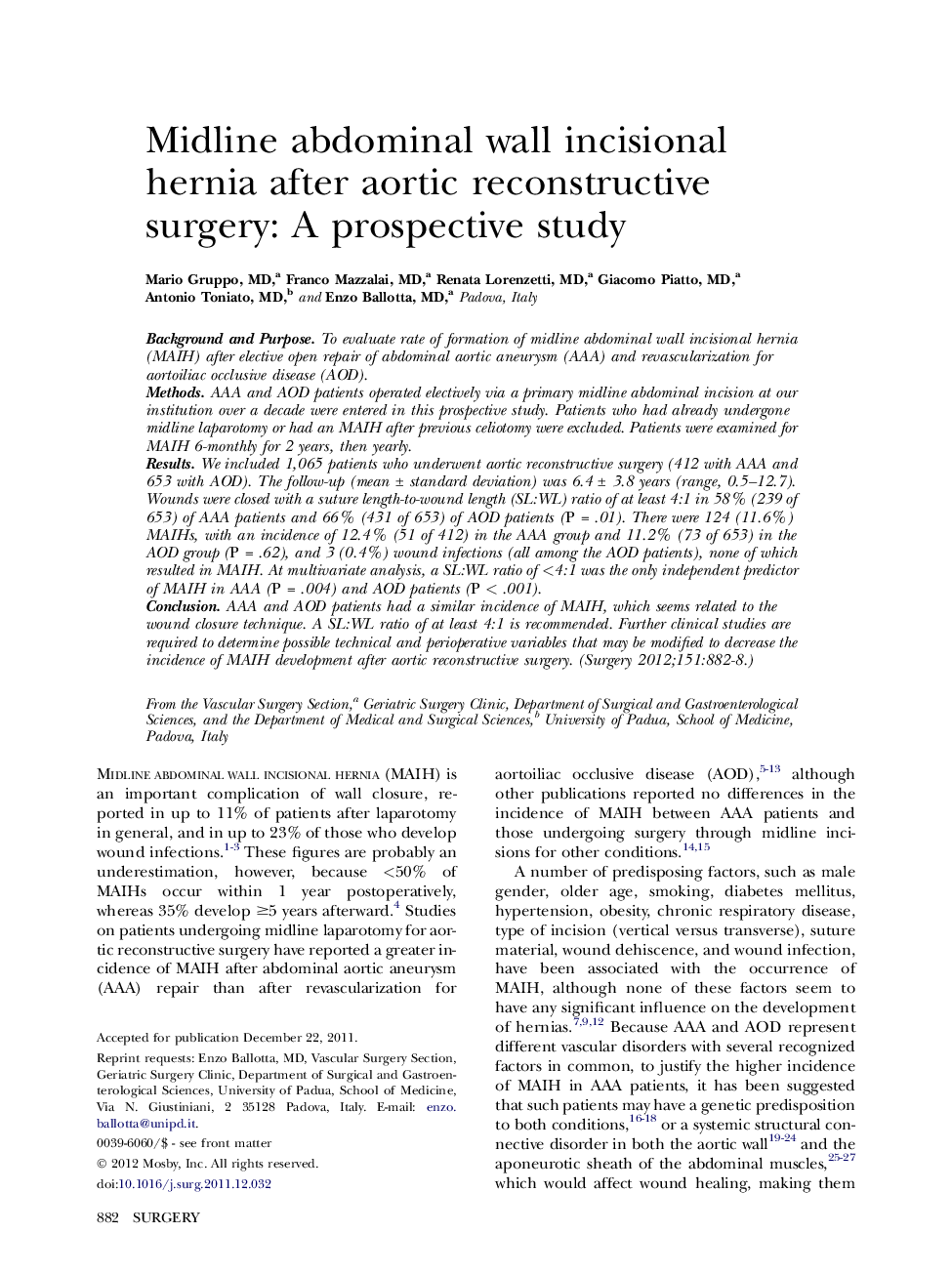| Article ID | Journal | Published Year | Pages | File Type |
|---|---|---|---|---|
| 4307805 | Surgery | 2012 | 7 Pages |
Background and PurposeTo evaluate rate of formation of midline abdominal wall incisional hernia (MAIH) after elective open repair of abdominal aortic aneurysm (AAA) and revascularization for aortoiliac occlusive disease (AOD).MethodsAAA and AOD patients operated electively via a primary midline abdominal incision at our institution over a decade were entered in this prospective study. Patients who had already undergone midline laparotomy or had an MAIH after previous celiotomy were excluded. Patients were examined for MAIH 6-monthly for 2 years, then yearly.ResultsWe included 1,065 patients who underwent aortic reconstructive surgery (412 with AAA and 653 with AOD). The follow-up (mean ± standard deviation) was 6.4 ± 3.8 years (range, 0.5–12.7). Wounds were closed with a suture length-to-wound length (SL:WL) ratio of at least 4:1 in 58% (239 of 653) of AAA patients and 66% (431 of 653) of AOD patients (P = .01). There were 124 (11.6%) MAIHs, with an incidence of 12.4% (51 of 412) in the AAA group and 11.2% (73 of 653) in the AOD group (P = .62), and 3 (0.4%) wound infections (all among the AOD patients), none of which resulted in MAIH. At multivariate analysis, a SL:WL ratio of <4:1 was the only independent predictor of MAIH in AAA (P = .004) and AOD patients (P < .001).ConclusionAAA and AOD patients had a similar incidence of MAIH, which seems related to the wound closure technique. A SL:WL ratio of at least 4:1 is recommended. Further clinical studies are required to determine possible technical and perioperative variables that may be modified to decrease the incidence of MAIH development after aortic reconstructive surgery.
